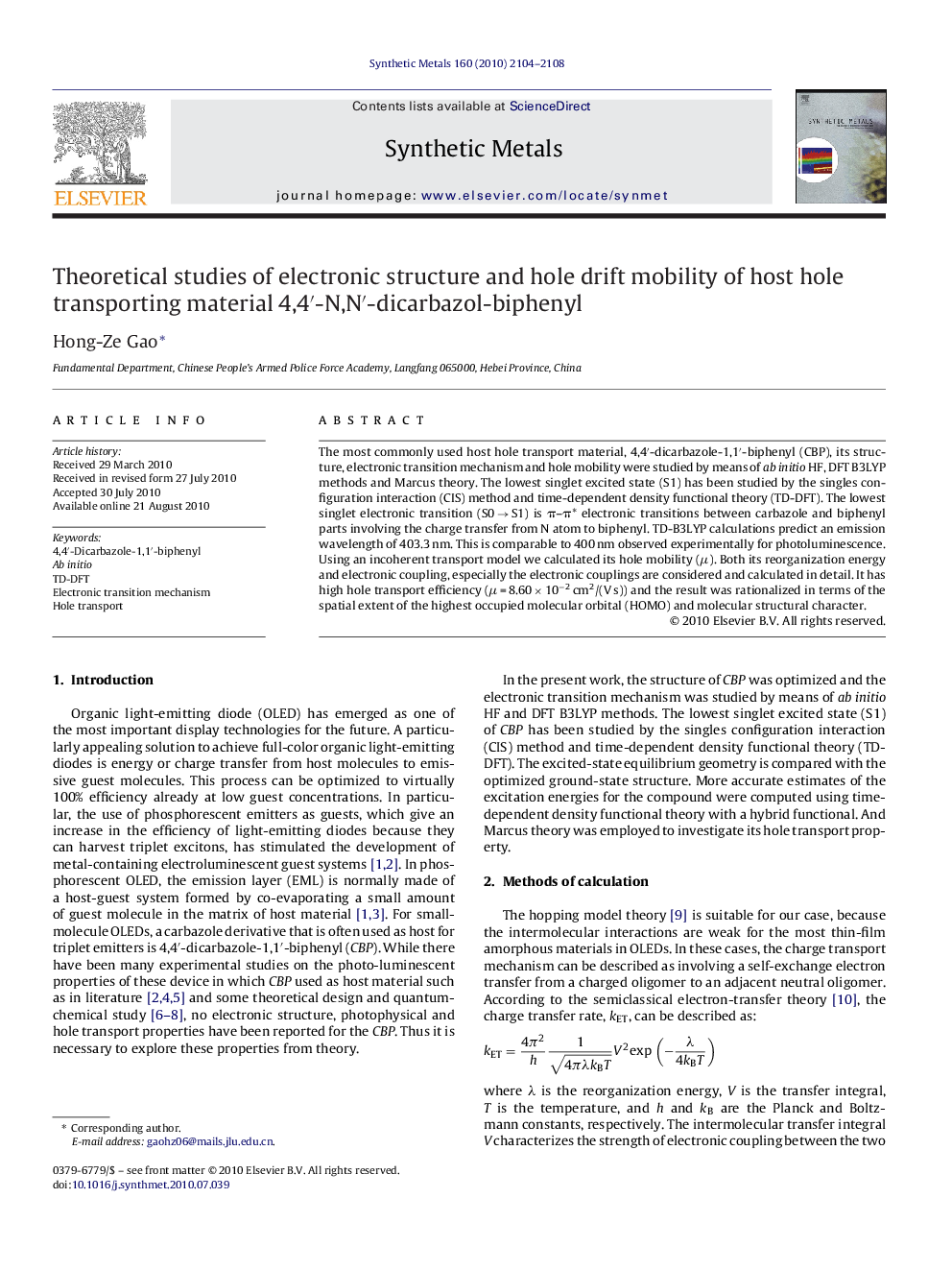| Article ID | Journal | Published Year | Pages | File Type |
|---|---|---|---|---|
| 1442320 | Synthetic Metals | 2010 | 5 Pages |
The most commonly used host hole transport material, 4,4′-dicarbazole-1,1′-biphenyl (CBP), its structure, electronic transition mechanism and hole mobility were studied by means of ab initio HF, DFT B3LYP methods and Marcus theory. The lowest singlet excited state (S1) has been studied by the singles configuration interaction (CIS) method and time-dependent density functional theory (TD-DFT). The lowest singlet electronic transition (S0 → S1) is π–π* electronic transitions between carbazole and biphenyl parts involving the charge transfer from N atom to biphenyl. TD-B3LYP calculations predict an emission wavelength of 403.3 nm. This is comparable to 400 nm observed experimentally for photoluminescence. Using an incoherent transport model we calculated its hole mobility (μ). Both its reorganization energy and electronic coupling, especially the electronic couplings are considered and calculated in detail. It has high hole transport efficiency (μ = 8.60 × 10−2 cm2/(V s)) and the result was rationalized in terms of the spatial extent of the highest occupied molecular orbital (HOMO) and molecular structural character.
